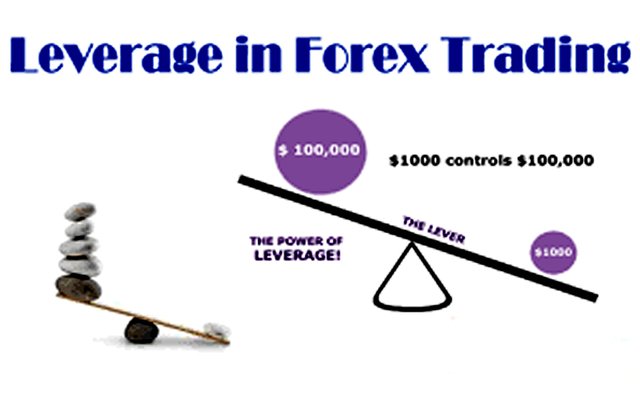What is the leverage?
We've already discussed something about this issue with you. This issue is more important to forex traders. So, in this article, you will get the details of this leverage.
If you search in the dictionary on this subject, its lexical meaning will be such a lot - 'To control a large amount of money, use very little money on your own and take the rest of the money.'
For example - for a position of $ 100,000, the broker will block $ 1,000 from your account. Here, you took a very high amount of money by spending less money.
Leverage is always expressed in the form of rays. Your leverage for this example above is 100: 1.
In other words,
You're controlling $ 100,000 with $ 1,000.
Suppose you invest $ 100,000 in all your capital for a position of $ 100,000, that means you are trading in 1: 1 leverage. In a word, leverage is more than the amount of dollars that can be bought / sold.
If your broker gives you $ 1,000 worth of $ 2000 trade, it means that you can trade Leverage 1: 2. Similarly, if you get $ 100,000 in trading, then your leverage is 100: 1.
What is margin / margin?
The forex traders are the most difficult to understand the calculations of this margin. We shared an example above,
For a position of $ 100,000, the broker will block $ 1,000 from your account. Here, you took a very high amount of money by spending less money. Then your leverage was 100: 1.
Notice, here this $ 1,000 is the margin. That is, the amount of money you have to spend in order to get an entry into the trade is the margin.
If we want to turn a little bit, margin is the amount of money that has to be deposited with the broker to open trading positions to the trader.
This money is used by your broker to open your trading positions. Basically your broker combines margin deposits with your margin deposit and other traders to create a large margin deposit and create an internal banking network.
Margins are basically calculated through percentage. The margin is determined by calculating the percentage of the leverage that you deposit on the trading account. If your leverage is 50: 1 here your broker will generally determine the margin 2%. Generally speaking, the more you take the leverage from the broker, the lower your fixed margin. For example, if your leverage is 20: 1, 33: 1, 50: 1, 100: 1, 200: 1, 400: 1, then your margin will be 5.00%, 3.00%, 2.00%, 1.00%, 0.50% Or 0.25%. Let's try to explain to you in more detail.
Margin Required / Scheduled Margin:
The fixed margin is that if you buy a currency pair, your broker determines the amount of margins you have set for that currency pair, which is the fixed margin / margin required.
Account Margin / Equity:
As already mentioned, account margin is the amount of principal deposited in your trading account.
Used Margin:
This is the amount of margin that your broker has cut from you when taking a trade position. You will not be able to get it back until you close that trade position.
Free Margin / Usable Margin:
This is the amount of margins left in your account, with which you can get more new trading positions.
Margin Call:
When a margin call is being made, your account will not be able to cope with your potential losses. Equity will move below or below the margin level, at that time your broker will stop trading positions you take.
(N:B: If you read about Forex trading -Forex Beginner Guide - Click here https://steemit.com/forex/@raymondgomes/some-tips-on-avoiding-loss-of-forex-trading-forex-beginner-guide )
#forex #market #trading #forexmarket #dollar #forextrading #tradingtips #forextips #forexbeginner #guideforex #ebookforex #guide #leverage #margins #leveragemergins
